This month, French homework will consist of reading as many French books as possible to complete the Scholastic 100 book challenge as a class!

Guided By Our North Stars
This month, French homework will consist of reading as many French books as possible to complete the Scholastic 100 book challenge as a class!

Instead of dictée this week, I ask that each student bring a picture or drawing of their family to present to the class on Friday. They should practice presenting each of their family members in the picture, including themselves.
For example:

Bonjour Grade 2 parents!
Here are the links to the 2A and 2B Gruffalo plays. Enjoy!
https://drive.google.com/file/
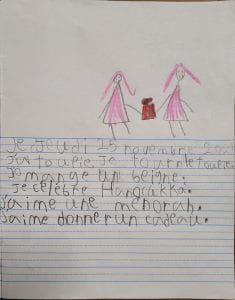
Yaara
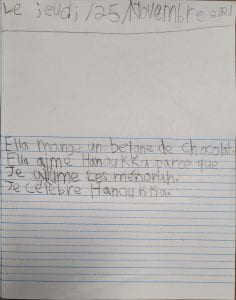
Ella
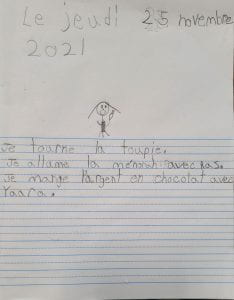
Abby
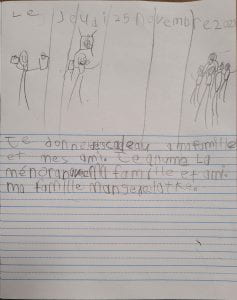
Ahron
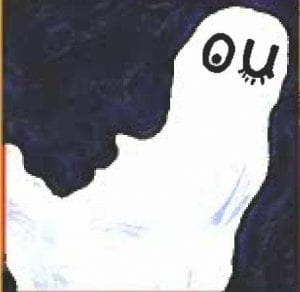
If you find that your child frequently forgets these sounds, you can remind them of these stories before you start reading. Keeping the sons-composés page in the navy duo-tang, open during reading, may also help.
OU – tells the story of a tired ghost who only has one eye open. He walks around the Village Des Sons saying ooouuuuuu but no one is scared because they know he is tired.
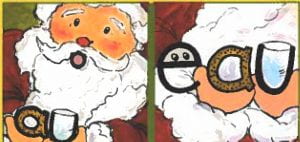
AU- tells the story of Monsieur O who is eating a cookie with a glass of milk. He says “OOOOO que c’est bon!”
EAU- tells the story of Monsieur O eating his cookie and milk again. However, this time, a creature, “E” keeps trying to eat the cookie.
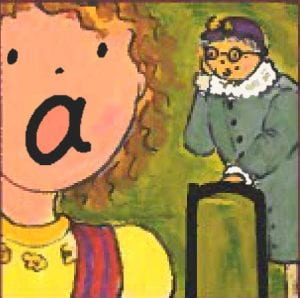
AN- tells the story of a little girl visiting her grandmother. Grandma uses a walker and is hard of hearing. Every time the girl asks grandma a question, grandma answers with “aaannnn?”
With Hanukkah around the corner, Grade 2 has started writing about their favourite things to do during the winter and holidays by using new vocabulary and action words.
Here are 2 of our star writers’ journal entries:
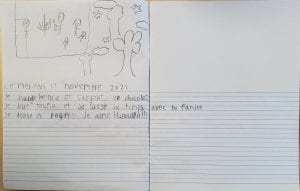 Marlowe
Marlowe
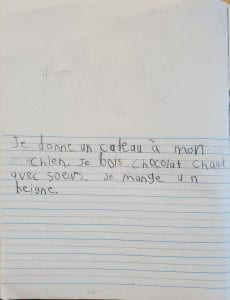 Jacob B
Jacob B
By now, you should have received access to a folder containing your child’s reading assessments. Many of you had questions regarding how to interpret this data.
In red at the top, you will find the level that was assessed.
In green, the letter E marks the errors. As your child reads, I checkmark each word that is read correctly. In the “E” column, you will find the mistakes for each page read.
In purple, the AC marks any autocorrections made by your child during reading time.
In yellow, on the second page, you will find the total errors made by your child while reading this book. If the number of errors exceeds 10% of the total words, it is too difficult.
On the third page, you will find the comprehension questions. These questions were asked in French and I used gestures and signs to help with understanding. Whether your child answered in French or English, at this point in the year, is not assessed.
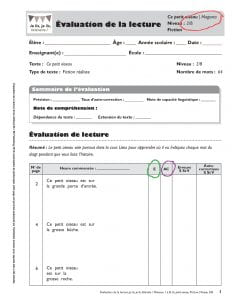
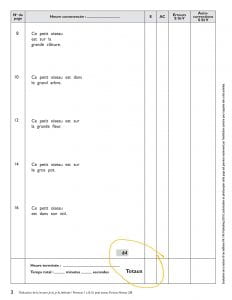
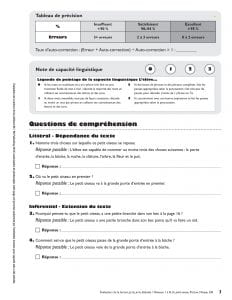
Individually, these assessments won’t mean much. As your child is assessed more and more throughout the year, these will help you track reading and comprehension progress.
To follow up on yesterday’s presentation, here is an explanation of the different sheets that can be found in your child’s navy blue reading duo-tang.
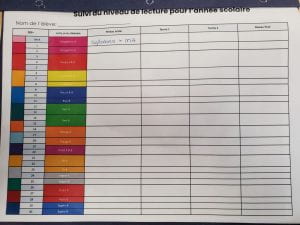
This sheet indicates your child’s reading level in Jelis for every term. Your child should read at this level when doing French reading homework. Every time they are assessed, this sheet will be updated and you will be able to track your child’s progress. If I have noted that your child should also practise syllables, please see the next sheet:
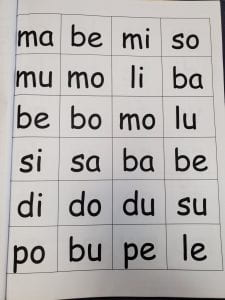
This syllable activity will help your child with pronunciation of vowels (which are different in French than in English). I ask that you set a timer for one minute and have your child correctly read as many syllables as possible. When the timer ends, you should put a sticker or sticky note on the last syllable they were able to read. The next time you do this activity, try to move the sticker further.
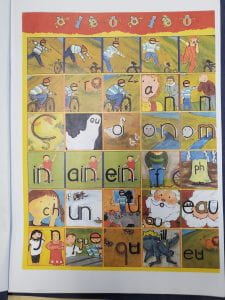
This sheet contains images of the sons composés we will be learning in class. It goes along with the program Raconte-moi les sons, which contains a story for each image. Your child should already be able to identify in this sheet, the son OU and explain to you the story of the tired ghost.
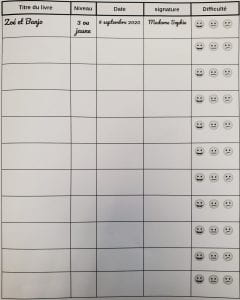
These sheets are your child’s reading log. Each time they read, I ask that you (or your child) writes down the name of the book, the level, date and level of difficulty of each book.
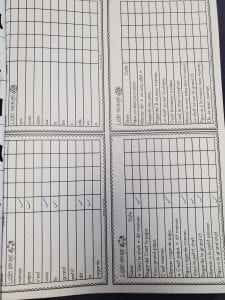 This sheet is for information purposes only and go along with our sight word and frequently-used word program that we work on in class. It should give you an idea of words your child can consistently read correctly and their next steps in this program.
This sheet is for information purposes only and go along with our sight word and frequently-used word program that we work on in class. It should give you an idea of words your child can consistently read correctly and their next steps in this program.
2A is in the lead, having read 41 books while 2B has read 31 books! Keep up the nightly reading, we are gettin close!

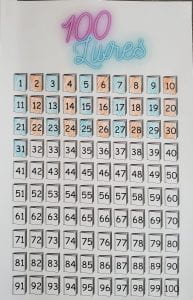
In order to encourage nightly reading, I will be offering a class reward when each member of our class has read on 5 separate occasions and our class total reaches 100! Each time your child reads in French (it may be practicing Quizlet cards, reading one book or two, or it may be that he or she is rereading a book that has already been read), please add an entry in their reading log (including the date) or email me. For the purpose of our challenge, students will only be able to color in one square at a time. In other words, they can read five books in one evening, but that will only count for one “reading session” and one square on the chart. The goal here is to encourage the habit of reading on a daily basis.
In order to ensure everyone can dedicate their evenings to reading, there will be no dictée this week.
When everybody has read 5 times and we have collectively read at least 100 times, students will get their reward.
-Mme Sophie